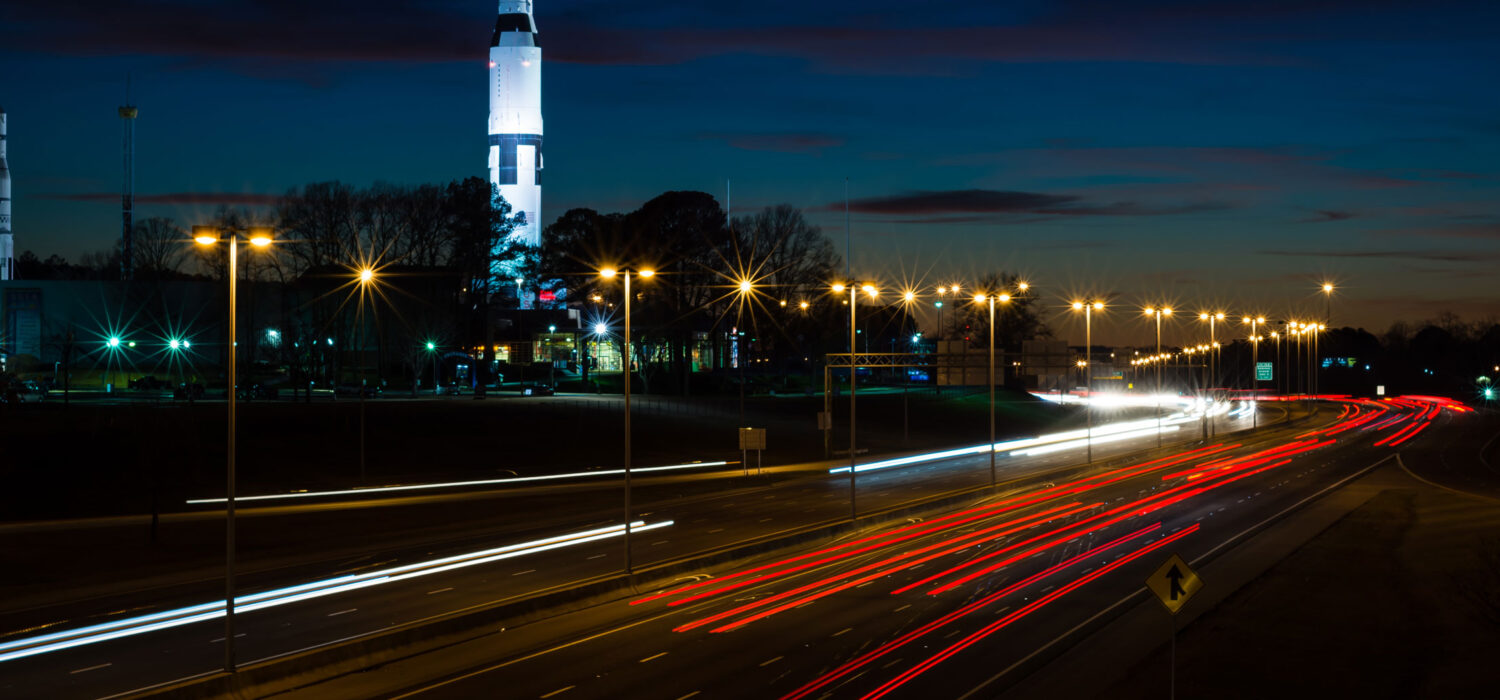The Alabama Department of Transport (ALDOT) is soliciting bids to widen parts of I-565 to six lanes.
Unfortunately, this move will likely worsen congestion, and carbon emissions. Luckily, there’s a better way to reduce driving time, thus spewing less greenhouse gas into the atmosphere.
Since the 1960’s, researchers have known that widening highways worsens traffic congestion due to a phenomenon called “induced demand.” And with more cars and worse traffic comes more carbon emissions. Transportation is the number-one source of US greenhouse gas emissions, contributing about 30%. Cars and trucks are responsible for 60% of that 30%.
Despite this, state transportation departments consistently underestimate the extent to which expanding highways worsens congestion. This is likely in large part due to provisions in many state constitutions forbidding states from spending DOT dollars on projects other than highways and roads.
The Colorado Department of Transportation, for example, expanded part of Interstate 25 in south Denver many years ago. After spending $800 million, congestion was worse than ever.
Electric cars are no panacea. Fewer than 8% of new cars sold in the US in 2023 were electric. The average car is 12 years old. Thus, we can expect every gas-powered car sold today to emit carbon for at least another decade. EVs also create battery waste and other kinds of pollution associated with EVs. Every aspect of creating, owning, operating, maintaining, parking, and disposing of any kind of personal motorized vehicle is environmentally destructive.
EVs also fail to solve the problem of driving being terrible for us. Long commutes are associated with obesity, larger waists, higher blood pressure, loneliness, a higher likelihood of divorce, and more.
Shoshana Lew, Executive Director, said Colorado’s transportation agency must help to “allow people to get places without a car.”
The US could enjoy the same carbon dioxide reduction as shutting down 28 coal-fired power plants by driving just 10% less each year. Taking transit reduces CO2 emissions by 45% over driving alone. Walking or riding a bicycle, ebike, or scooter is even better.
The New York Times story cites a 2023 study showing that upzoning could reduce emissions in Denver by 8%, mostly by helping people avoid driving.
Toward that end, Colorado recently passed a law tying transportation funding to greenhouse gas emissions goals.
Lew said the greenhouse gas rule sped up the BRT effort by years. Colorado’s DOT allocated $170 million to bus rapid transit (BRT) in Denver in 2022. BRT offers the speed of light rail with the low cost and flexibility of bus service. The agency is investing $120 million toward a statewide bus service, Bustang, over the next ten years.
Here in Huntsville, our City Council recently approved two grant applications, one of which will help fund new sidewalks, bike lanes, and street lamps on Holmes Avenue. This move shouldn’t just reduce traffic congestion, but will also help Huntsville achieve its goal of zero roadway fatalities by 2055.
But fewer, narrower highways and more transit alone won’t necessarily reduce driving.
“To make it possible for people to drive less, they need to live closer to where they are going,” writes Megan Kimble for the New York Times.
Kimble spoke with Costa Samaras, Director of the Wilton E. Scott Institute for Energy Innovation at Carnegie Mellon University. To meet emissions targets, “We need to be building the types of communities that enable folks to move around without needing to rely on a car,” Samaras said.
Which is part of why, in May, Colorado’s Governor Jared Polis signed several smart urbanism bills into law, legalizing dense, walkable housing near transit and expanding where developers can legally build accessory dwelling units.
The best way for any city or state to reduce transportation emissions is to reduce sprawl and incentivize walking, biking, and transit use by eliminating exclusionary zoning and building densely. That’s most of the reason people who live in dense cities produce significantly fewer carbon emissions per capita than suburb-dwellers.
